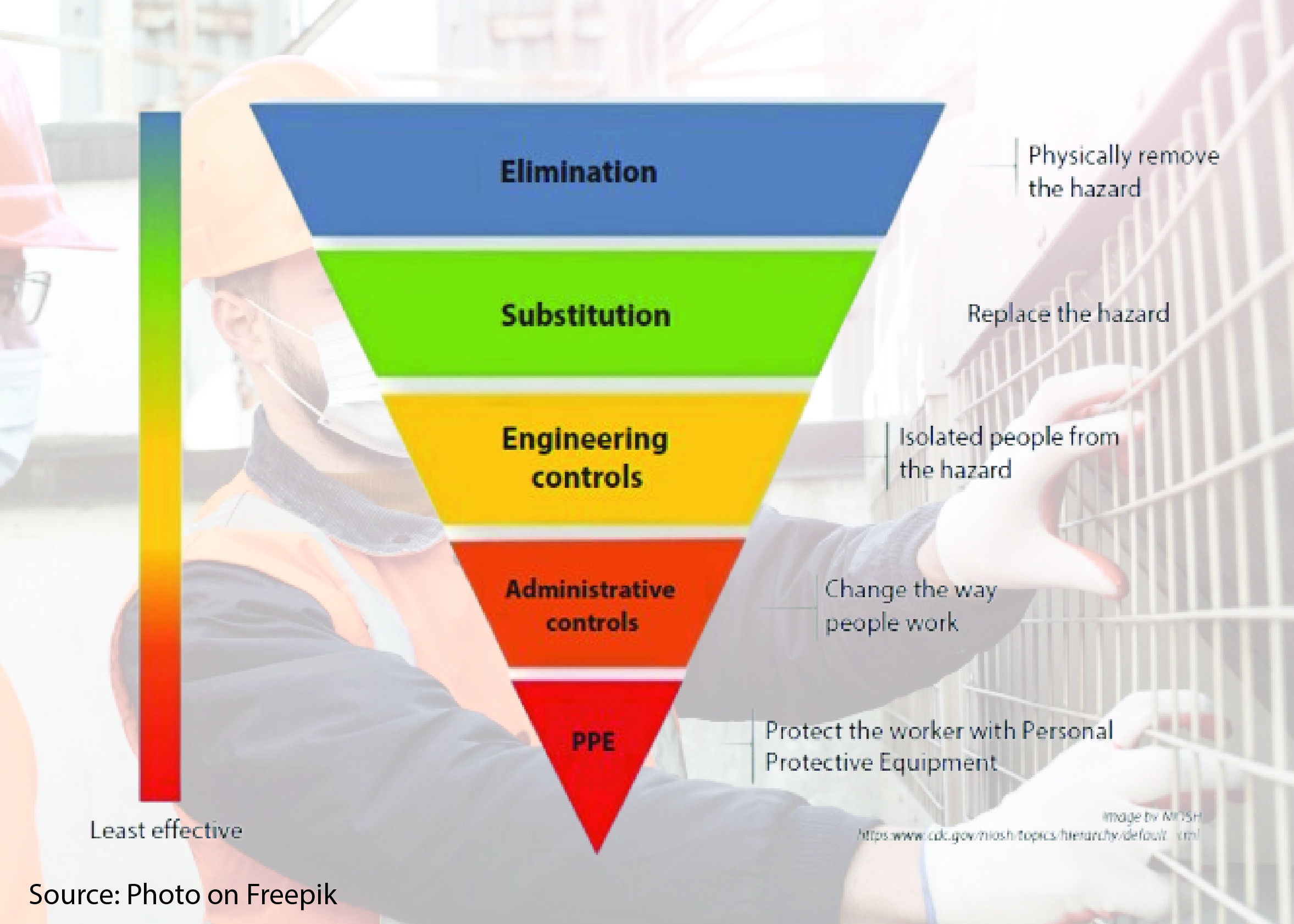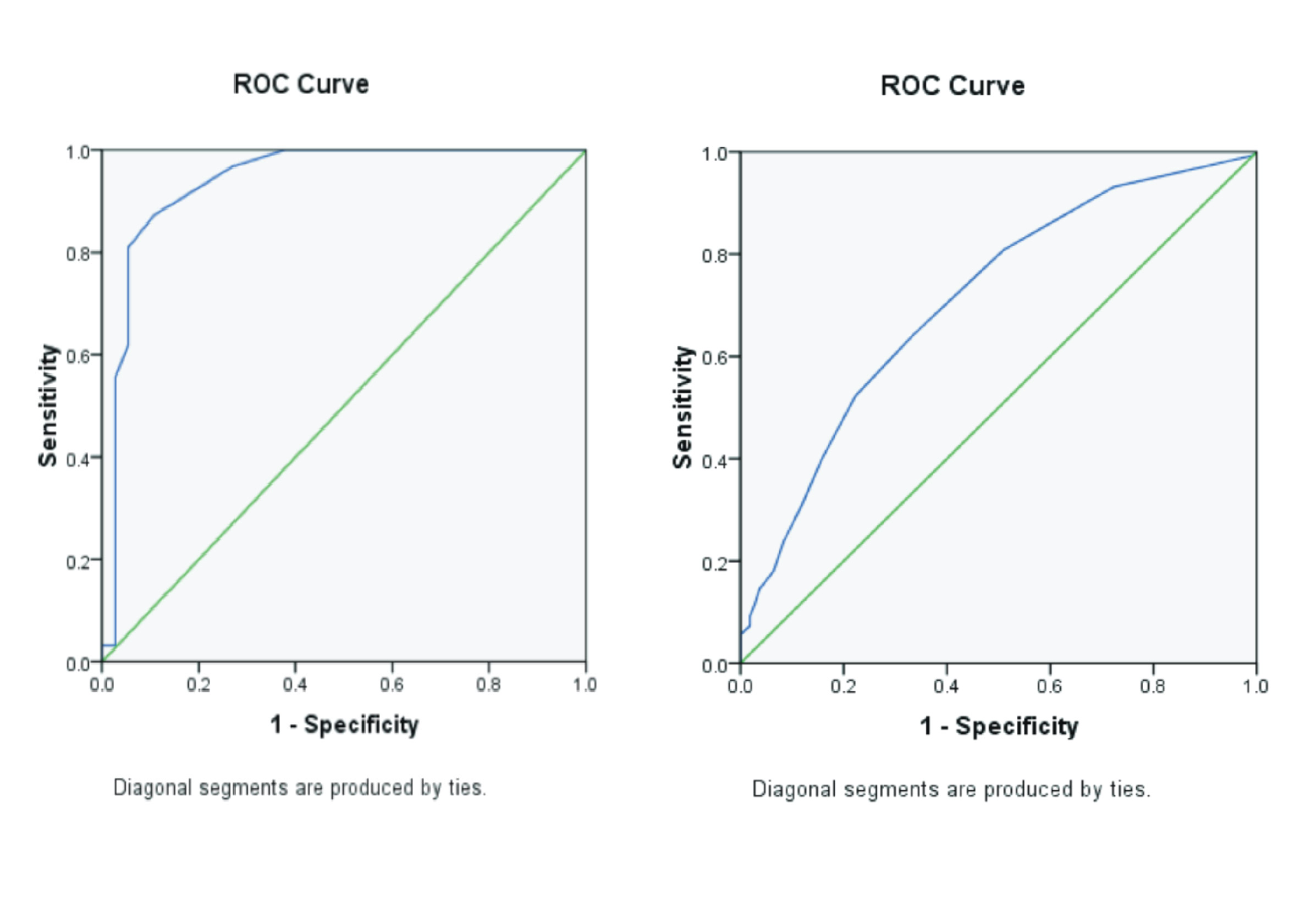ELECTRICAL INDUSTRY SAFETY: EXAMINING CONTROL STRATEGIES TO REDUCE ELECTRICAL RISKS BASED ON OSHA AND BLS (2011-2021) REPORTS

Background: One essential component of contemporary society is the use of electricity in a variety of industrial sectors. However, its vital role brings inherent risks that demand strict adherence to safety precautions. Purpose: This literature review investigates and evaluates control measures implemented in the electrical industry to reduce risks and lower the incidence of electrical fatalities. The analysis focuses on the effectiveness of these control strategies and their alignment with the hierarchy of control framework. Review: This literature review employs a descriptive quantitative analysis. This study analyzes data from 2011 to 2021. During this period, the Bureau of Labor Statistics (BLS) reported 1.653 work-related electrical fatalities, while the Occupational Safety and Health Administration (OSHA) reported 1.201. Result: 118 vocations were linked to electrical fatalities during this time. Of these, 31% of deaths occurred in electrical-related jobs, while 69% happened in non-electrical jobs. This finding highlights the urgent need for comprehensive safety measures and effective control strategies to mitigate electrical hazards. Conclusion: This literature review highlights the importance of applying the Hierarchy of Controls (HOC) in managing electrical risks in the workplace. It calls for proactive interventions and a cultural shift toward prioritizing safety, integrating human awareness with strict regulations to reduce electricity-related fatalities.
Introduction
The widespread use of electricity in workplaces necessitates strict and vigilant safety measures. Safeguarding against electrical hazards is crucial to preventing accidents, injuries, and fatalities. This study examines the various aspects of electrical safety with a particular focus on the controls used by the electrical industry. The study aims to assess the effectiveness of these measures in mitigating electrical risks by analyzing them through the lens of the hierarchy of controls framework.
The most significant energy source utilized in workplaces is electricity, and there is a clear correlation between economic growth and electricity use(Falahati et al., 2019). Despite being an essential human need, electricity poses a risk to the safety of users, employees, and technologists. As technological development continues, the hazards associated with electrical contact have also increased. In the growing construction sector, electrical installation has become a critical component of project operations and functionality(Cui & Shan, 2021). Electrical accidents are a major problem for the construction industry because they are nearly five times more likely to result in serious or fatal outcomes compared to other types of incidents(Suárez-Cebador et al., 2014). In the United States alone, the construction industry reports over 5.000 electric shock deaths annually, or roughly 20% of all work-related deaths. Moreover, electrical accidents occur 25 times more frequently than fall-related accidents(Falahati et al., 2019). This highlights the pressing need for increased awareness and proactive prevention of electric shock hazards(Gambhir et al., 2022). Hazard identification is always the first step towards putting a safer design into practice and preventing major accidents. It is essential for figuring out the causes and effects of potential hazards inherent in processes(Qi et al., 2021);(Sadeghi-Yarandi et al., 2023). Incidents are attributed to a lack of awareness of the importance of electrical hazards and workplace safety and health(Salvaraji et al., 2022). Accident statistics continue to reflect the consequences of improper energy control, with numerous worker fatalities on construction sites each year(Burlet-Vienney et al., 2021). The advancement and development of the building itself, as well as the industry, will be aided by relevant units and personnel paying closer attention to and using grounding and lightning protection technology during actual construction to reduce the risk of lightning disasters affecting the building's personnel and internal electrical equipment safety(Cui & Shan, 2021).(Qu et al., 2022)address the challenge faced by maintenance personnel in identifying and resolving complex electrical hazards by proposing a knowledge-driven recognition methodology. Any workplace handling or regularly using electricity should place a high priority on the safety of its employees and visitors. A study by(Baby et al., 2021)revealed a significant correlation between worker health, climate aspects related to safety, personal characteristics, and occupational accidents. Individual factors like age, expertise, level of education, and positional role greatly influence how electrical workers act in a safe manner. Electrical safety regulations mandate that organizations implement safety measures and follow best practices. These regulations are crucial in establishing the benchmarks for a safe and secure work environment. Global workplace safety laws include the Australian Model Code of Practice for Managing Electrical Risks, the UK HSE, the US OSHA, and the EU Directive. This literature review evaluates the effectiveness of control measures in the electrical industry and examines how well they align with the hierarchy of controls framework to reduce electrical hazards and fatalities.
Literature Study
Descriptive quantitative analysis method
This study employs a descriptive quantitative analysis based on secondary data obtained from the Electrical Safety Foundation’s Workplace Injury and Fatality Statistics report(Injury & Statistics, 2018)as presented inFigure 1. The report furnishes statistical information pertaining to electrical fatalities that occurred in the US workplaces between 2011 and 2021. According to the Occupational Safety and Health Administration (OSHA) reports that 1.201 deaths during this period were link to electrical incidents. Meanwhile, the Bureau of Labor Statistics (BLS) reported a total of 1.653 electrical fatalities during the same time frame. It's interesting to note that 69% of these fatal electrical incidents happened in professions not normally connected to electricity use. In total, electrical fatalities were recorded across 118 different job categories. Of these, 31% occurred in the electrical industry, while the remaining 69% involved non-electrical industries. Over the eleven years analyzed (2011- 2021), both non-electrical and electrical occupation fatalities decreased by an average of 1.2% and 0.89%, respectively. This suggests a gradual reduction in the number of fatalities across both occupational groups. It is important to note that BLS reports total workplace fatalities, but the Occupational Safety and Health Administration (OSHA) only records cases with completed accident reports. As a result, BLS data provides a more comprehensive account of electrical fatalities, while OSHA data reflects only those incidents that have undergone formal investigation.
Figure 1.Electrical deaths according to type of occupation(Injury & Statistics, 2018)
Guidelines for managing safety and health programs are outlined by the Occupational Safety and Health Administration(O.S.H.A., 2015)), which highlights the value of employer and employee cooperation in identifying and putting control measures in place for workplace hazards. A systematic framework for minimizing or eliminating workplace risks, the Hierarchy of Controls (HOC) is regarded as the gold standard in occupational safety managementFigure 2. It consists of five levels of intervention, arranged in descending order of effectiveness. Personal Protective Equipment (PPE), administration controls, engineering, substitution,
Ayu, B., Tualeka, A., Ardyanto, D., 2018. The Analysis of Factors which are Related to The Compliance of Welder Workers in using Workplace Personal Protective Equipment in PT. PAL Indonesia. Indian Journal of Public Health Research & Development Vol. 9(5), 47.
Babalola, A., Manu, P., Cheung, C., Yunusa-Kaltungo, A., Bartolo, P., 2023. Applications of Immersive Technologies for Occupational Safety and Health Training and Education: A Systematic Review. Safety Science Vol. 166, Pp. 106214.
Baby, T., Madhu, G., Renjith, V.R., 2021. Occupational Electrical Accidents: Assessing The Role of Personal and Safety Climate Factors. Safety Science Vol. 139, Pp. 105229.
Burlet-Vienney, D., Chinniah, Y., Nokra, A., Ben Mosbah, A., 2021. Safety in The Quebec Construction Industry: An Overview of And Possible Improvements in Hazardous Energy Control using Lockout on Construction Sites by Electricians, Pipefitters, Refrigeration Mechanics and Construction Millwrights. Safety Science Vol. 144, Pp. 105468.
CDC, 2023. Hierarchy of Controls.
Chan, A.P.C., Wong, F.K.W., Hon, C.K.H., Choi, T.N.Y., 2020. Construction of A Bayesian Network Model for Improving The Safety Performance of Electrical and Mechanical (E&M) Works in Repair, Maintenance, Alteration and Addition (RMAA) Projects. Safety Science Vol. 131, Pp. 104893.
Cui, H., Shan, Y., 2021. Research on Lightning Overvoltage in Building Electrical Engineering. In: 2021 4th International Conference on Advanced Electronic Materials, Computers and Software Engineering (AEMCSE). Presented at The 2021 4th International Conference on Advanced Electronic Materials, Computers and Software Engineering (AEMCSE), IEEE, Pp. 18–21.
Falahati, M., Karimi, A., Zokaie, M., Biabani, A., Faghihnia Torshizi, Y., Salehi, F., 2019. Development and Validation of Active Performance Indicators of Electrical Safety using Bow Tie and Bayesian Network Techniques. Iran Occupational Health Vol. 16(4), Pp. 22-34.
Gambhir, A.V., Yadav, D., Ethape, S., 2022. High Voltage Safety Considerations for Indian EVs (SAE Technical Paper No. 2022-28–0103). SAE International, Warrendale, PA.
Injury, O., Statistics, F., 2018. Workplace Injury & Fatality Statistics. ESFI, Pp. 1–7.
Kallambettu, J., Viswanathan, V., 2018. Application of Functional Safety to Electrical Power Equipment and Systems in Process Industries. Journal of Loss Prevention in the Process Industries Vol. 56, Pp. 155-161.
Kartika, A.P., Budiarti, V., Kuncoro, A., Kimura, C., Tualeka, A.R., 2020. Safe Concentration of Benzene Exposure based on Safe Human Dose of Workers in The Paint Manufacturing Industry Sidoarjo, East Java. Indian Journal of Forensic Medicine and Toxicology Vol. 14(2), Pp. 1202-1206.
Nugroho, K., Tualeka, A., Wardaya, I., 2023. Analysis of Factors Related to Near Miss among Nurses. The Indonesian Journal of Occupational Safety and Health Vol. 12(1), Pp. 19-29.
OSHA, 2015. OSHA Safety and Health Program Management Guidelines , Pp. 1–30.
Qi, M., Liu, Yulin, Landon, R.S., Liu, Yi, Moon, I., 2021. Assessing and Mitigating Potential Hazards of Emerging Grid-Scale Electrical Energy Storage Systems. Process Safety and Environmental Protection Vol. 149, Pp. 994-1016.
Qu, Z., Zhang, Z., Liu, S., Cao, J., Bo, X., 2022. Knowledge-Driven Recognition Methodology for Electricity Safety Hazard Scenarios. Energy Reports Vol. 8, Pp. 10006-10016.
Rachman, R.F., Tuasikal, I.Z., Tualeka, A.R., Mahmudiono, T., Suwardi, S., 2022. Evaluation of The Exposure to Benzene and SpmA using The Urine of Workers in The Shoe Home Industry in Surabaya. The Indonesian Journal of Occupational Safety and Health Vol. 11(3), Pp. 436-444.
Rafi’ah, Tualeka, A.R., Widajati, N., 2018. A Correlation Analysis of Attitude, Subjective Norm and Behavioral Control Toward The Intention of Safety Behavior: (A Study on Plate Cutting Workers of Commercial Ships Division PT. PAL Indonesia (Persero). Indian Journal of Public Health Research & Development Vol. 9(5), Pp. 137-141.
Rahman, Z.F., Masruroh, N.L., Tualeka, A.R., 2020. Risk Assessment, Risk Management, and Risk Communication in The Carpet Industry: PT. ‘X’ Pandaan. East Jawa. Indian Journal of Forensic Medicine & Toxicology Vol. 14(1), Pp. 439-443.
Sadeghi-Yarandi, M., Torabi-Gudarzi, S., Asadi, N., Golmohammadpour, H., Ahmadi-Moshiran, V., Taheri, M., Ghasemi-Koozekonan, A., Soltanzadeh, A., Alimohammadi, B., 2023. Development of A Novel Electrical Industry Safety Risk Index (EISRI) in The Electricity Power Distribution Industry based on Fuzzy Analytic Hierarchy Process (FAHP). Heliyon Vol. 9(2), Pp. e13155.
Salvaraji, L., Jeffree, M.S., Awang Lukman, K., Saupin, S., Avoi, R., 2022. Electrical Safety in A Hospital Setting: A Narrative Review. Annals of Medicine and Surgery Vol. 78, Pp. 103781.
Sandianto, S., Tualeka, A.R., Indriani, D., 2018. The Effect of Workload on The Job Stress of Nurses in outpatient Care Unit of Public Hospital surabaya, Indonesia. Indian Journal of Public Health Research & Development Vol. 9(1), Pp. 80.
Suárez-Cebador, M., Rubio-Romero, J.C., López-Arquillos, A., 2014. Severity of Electrical Accidents in The Construction Industry in Spain. Journal of Safety Research Vol. 48, Pp. 63-70.
White, K.M., Jimmieson, N.L., Obst, P.L., Gee, P., Haneman, L., O’Brien-McInally, B., Cockshaw, W., 2016. Identifying Safety Beliefs among Australian Electrical Workers. Safety Science Vol. 82, Pp. 164-173.
Zhao, D., McCoy, A.P., Kleiner, B.M., Smith-Jackson, T.L., 2015. Control Measures of Electrical Hazards: An Analysis of Construction Industry. Safety Science Vol. 77, Pp. 143-151.
Copyright (c) 2025 Journal of Vocational Health Studies

This work is licensed under a Creative Commons Attribution-NonCommercial-ShareAlike 4.0 International License.
- The authors agree to transfer the transfer copyright of the article to the Journal of Vocational Health Studies (JVHS) effective if and when the paper is accepted for publication.
- Legal formal aspect of journal publication accessibility refers to Creative Commons Attribution-NonCommercial-ShareAlike (CC BY-NC-SA), implies that publication can be used for non-commercial purposes in its original form.
- Every publications (printed/electronic) are open access for educational purposes, research, and library. Other that the aims mentioned above, editorial board is not responsible for copyright violation.
Journal of Vocational Health Studies is licensed under a Creative Commons Attribution-NonCommercial-ShareAlike 4.0 International License














































